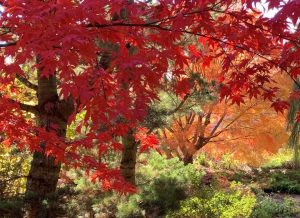It’s nearly the end of October now, and the colors are truly eye popping at Topiary Gardens. Today, the weather was just too gorgeous to ignore. So, with camera in hand, I strolled beneath the painted branches of maples and pines to capture these last few hours of nature’s glory.
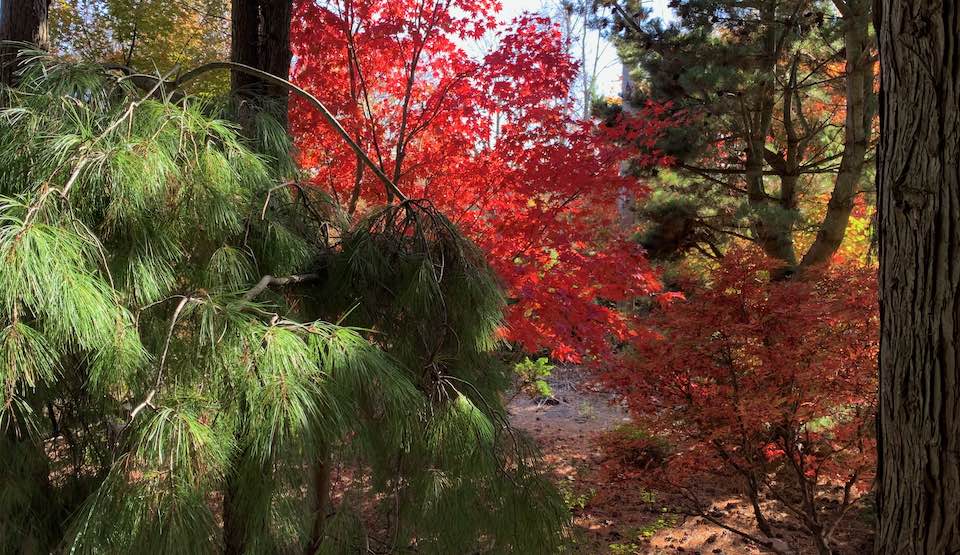
Soon, the leaves will curl from frost and descend to the ground, a crisp blanket that will become next years fertilizer.
Is this paradise?
A narrow path of stone among the gravel leads curious eyes to this serene vista. Crouching in the shadows of an old red maple I couldn’t help but think I was in another world here.
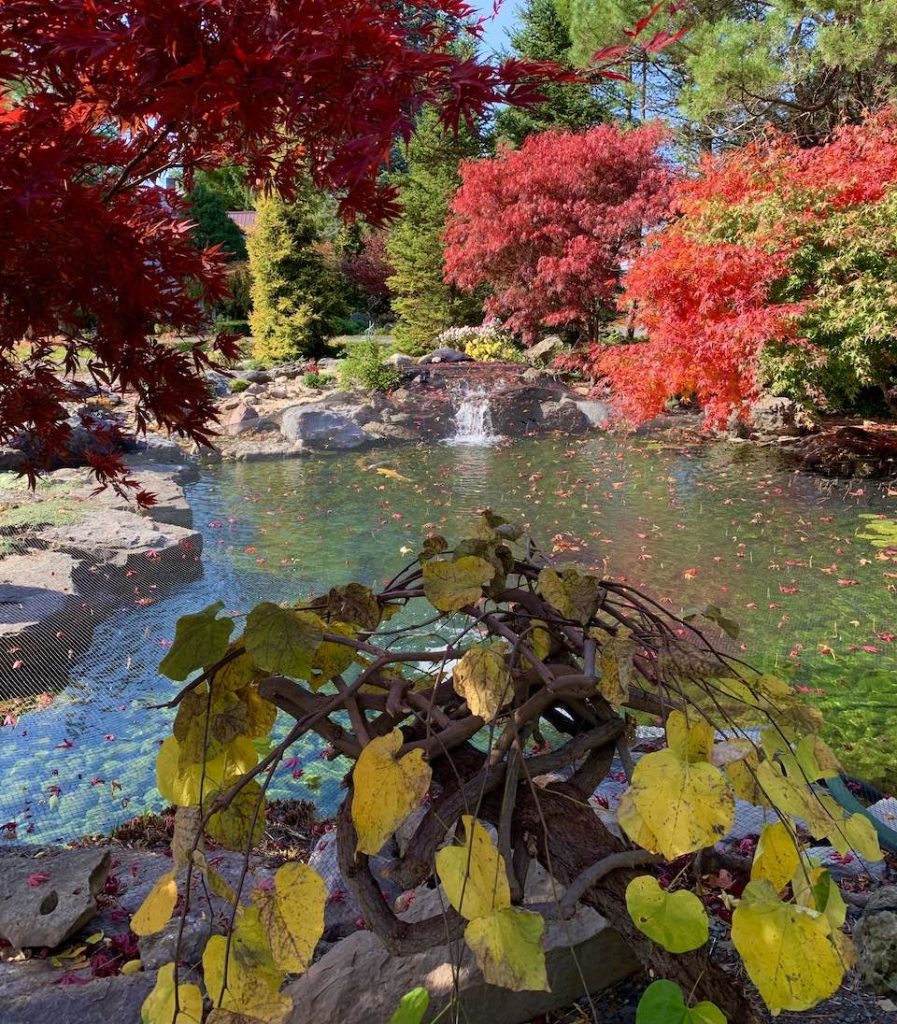
The sun glinted off the coy pond whose languid inhabitants meandered about, free of worry. A gentle breeze shook loose a sprinkling of leaves that fluttered to the water, like boats on a journey reminding me the season is changing.
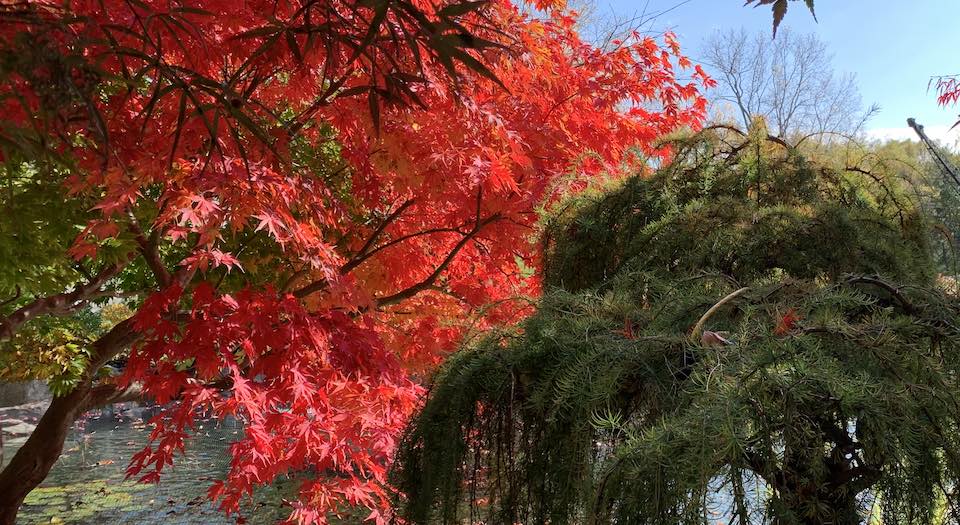
I followed the path around the pond to stand beneath those flaming red branches, hoping to capture the perfect shot. I took about 20 different photos before I found one that did the moment justice.
Good bones
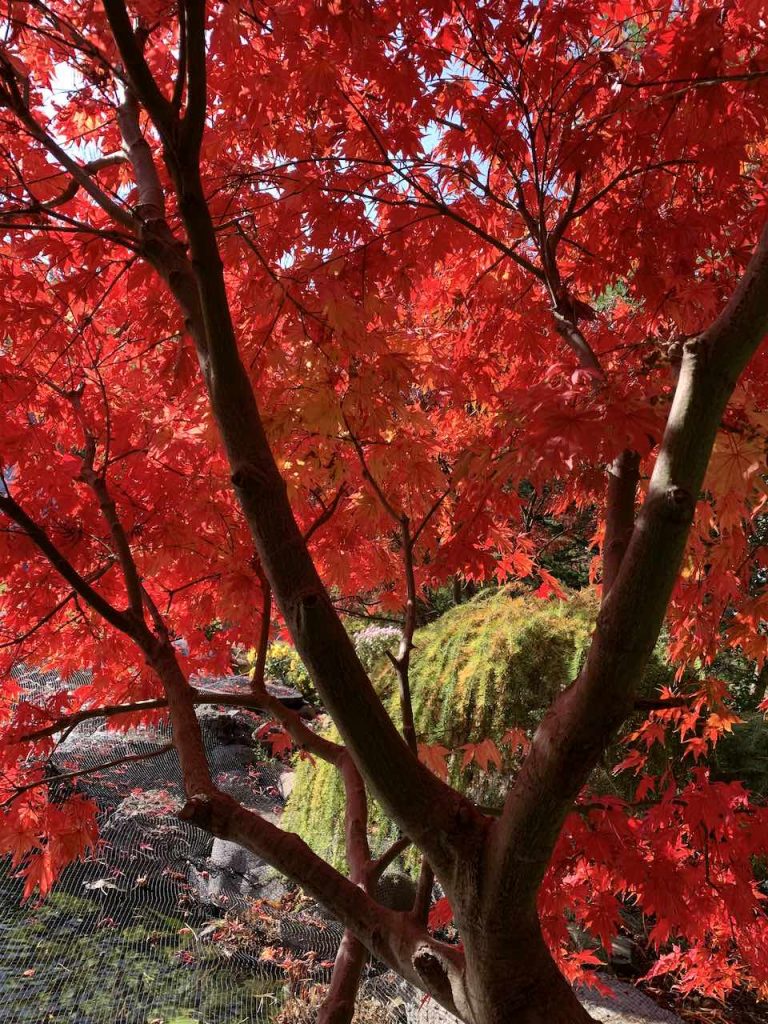
This is a very old garden. Thirty years ago, our shadows fell down upon the trees that now spread high above. In fact, it can be easy to miss the beauty if you forget to raise your head to the sky.
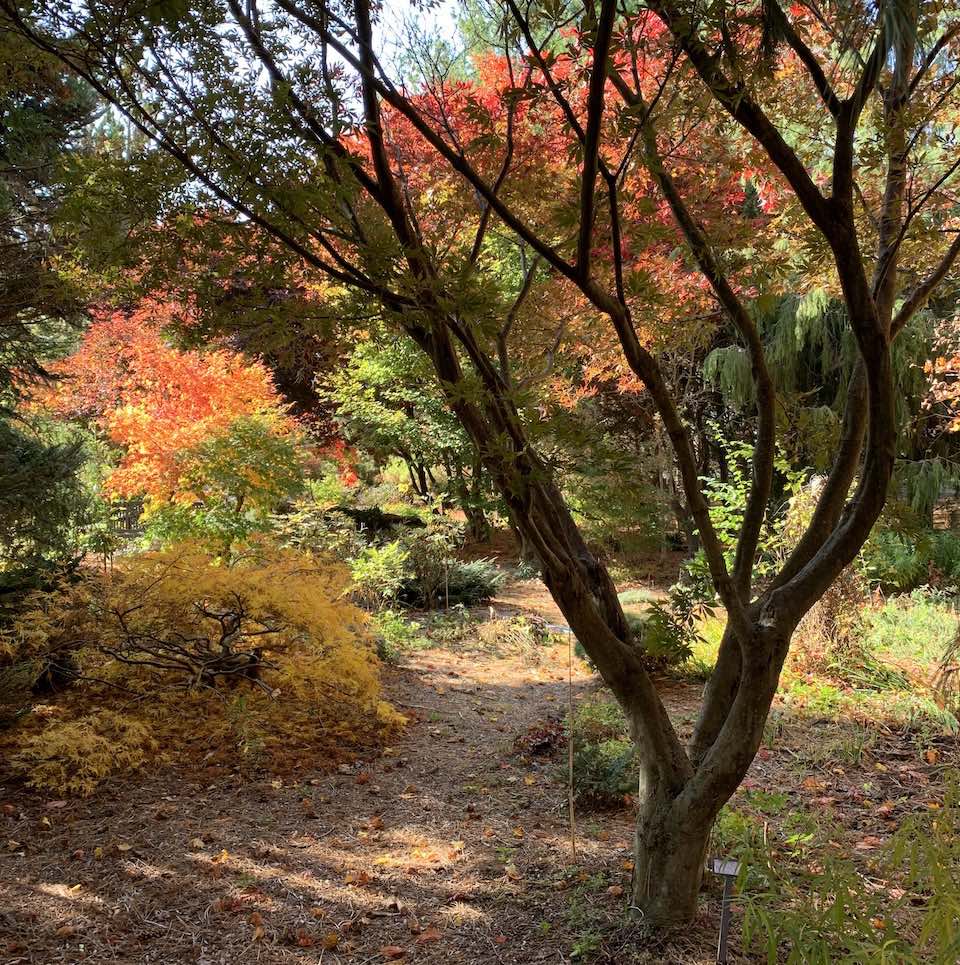
Just as people say “this house has good bones,” a garden, too needs structure. Thick-trunked trees and weeping pines anchor each pathway, lined with mounding golden Japanese maples and rare plants.
A truly breathtaking garden needs a diversity of colors, textures, shapes, and sizes to keep interest.
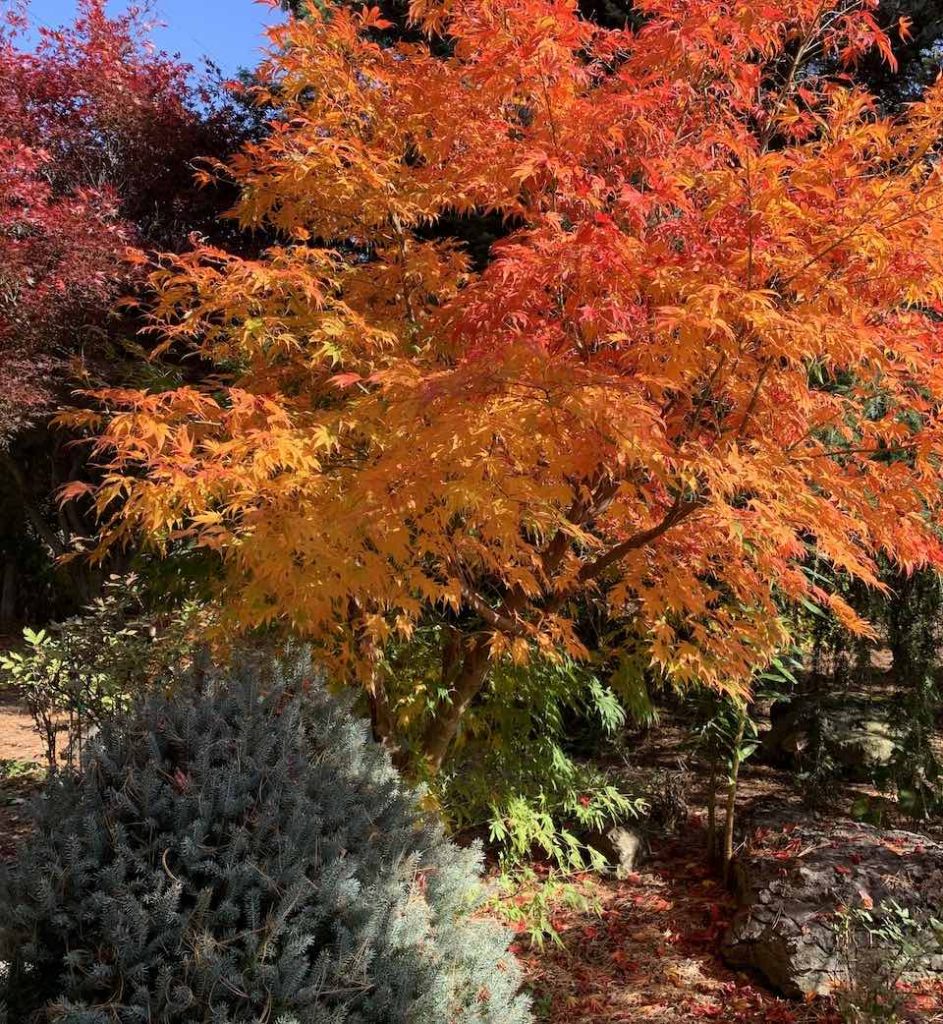
New perspectives
Around each corner at Topiary Gardens you’ll discover something unexpected. Sometimes a large pine blocks a small, fiery dwarf maple, and you only notice it when you return back down the same path with a new perspective.
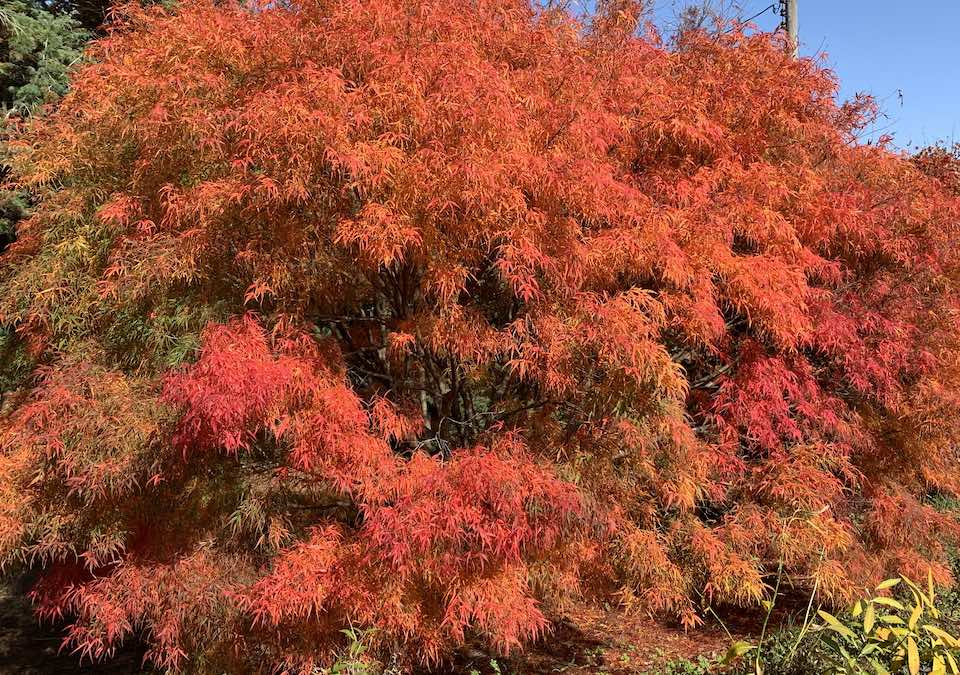
The massive colorful cloud of our 18 foot Koto no Ito appears dense and impenetrable from the front. But, walk behind, and you’ll discover an elegant network of branches that would make an amazing hideaway.
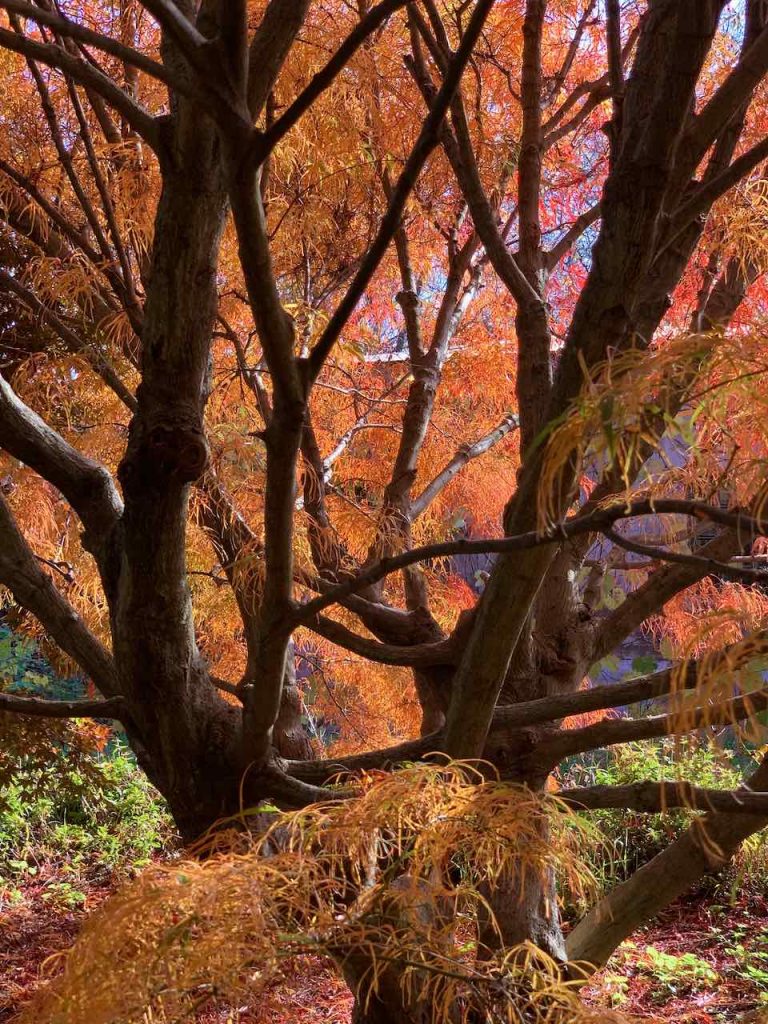
Rewarding work
Gardens like this require mythical amounts of patience and vision to create. It’s less about collecting trees you love, and more about knowing the size, habit, color and texture of each plant you select.
You must know how big something will grow so the trees work in harmony to create a canopy, rather than competing for dominance. When you truly know your trees, you can plan color palettes that remain interesting from first spring leaf through the heat of summer, the chill of autumn, and the stillness of winter.
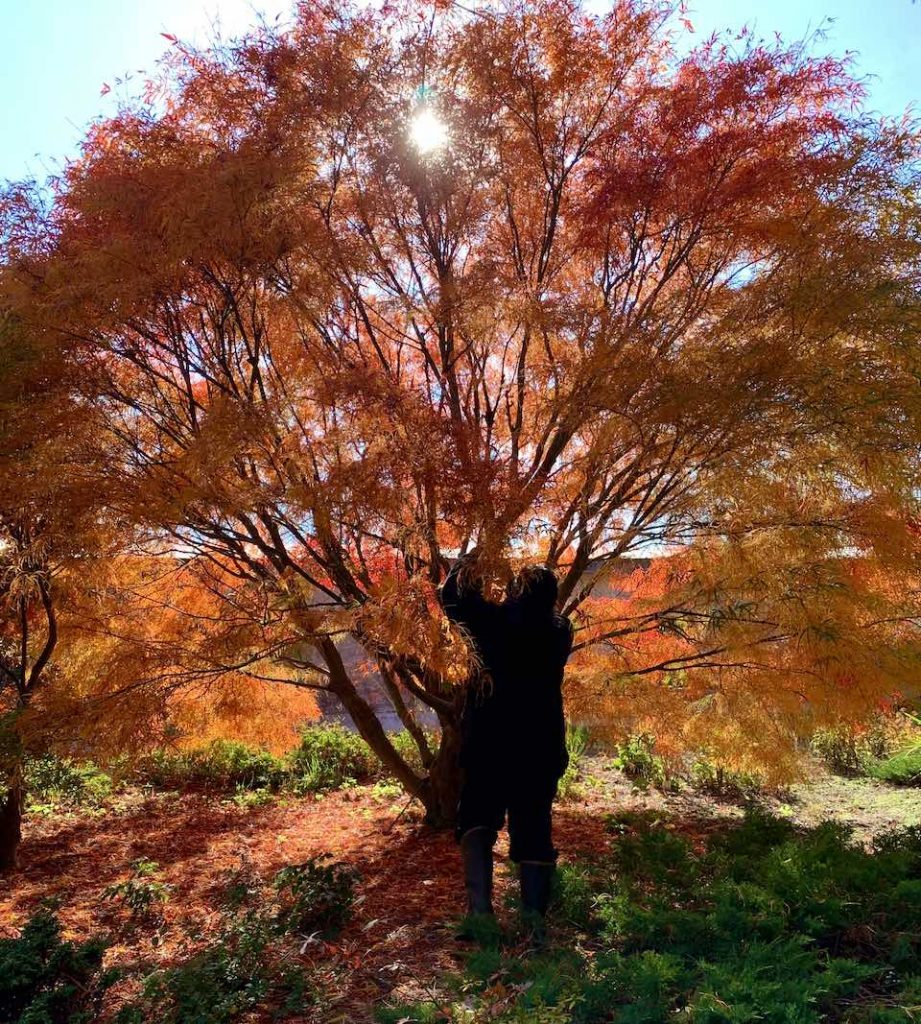
It takes a lot of work: weeding, pruning, repairing, planning, anticipating, and sometimes grieving.
In the end, it’s absolutely worth the time spent.
